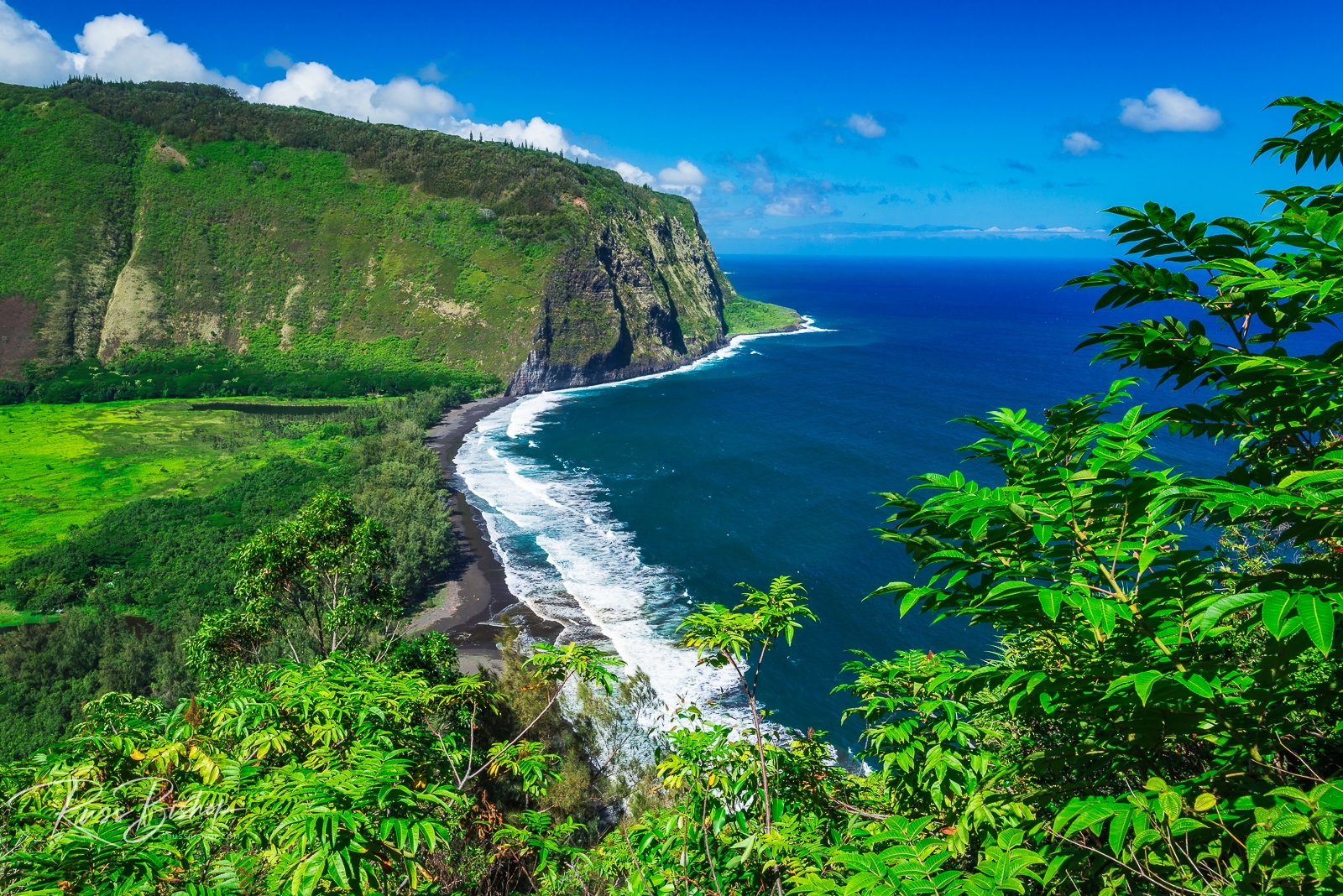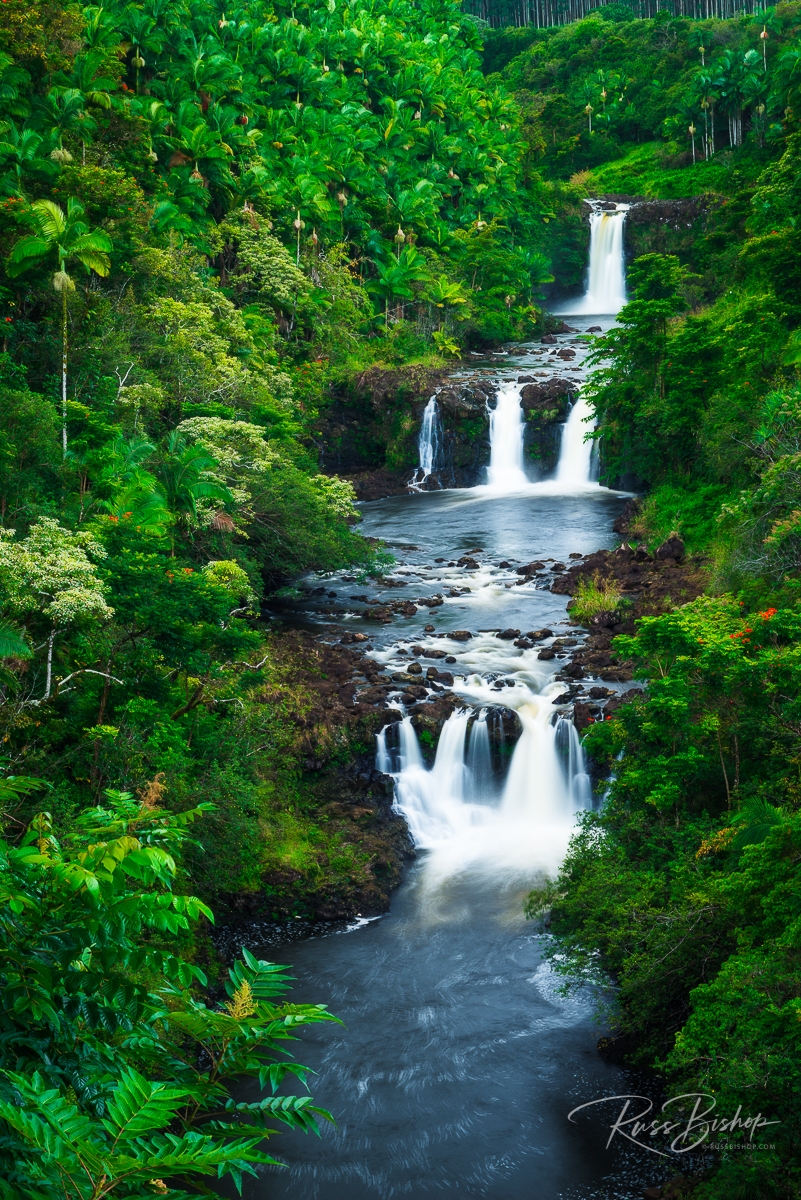
Tucked away on the remote Hamakua Coast of The Big Island, Hawaii’s Valley of the Kings preserves the essence of ancient Hawaii. From its black sand beach, dramatic cliffs, and waterfalls to the scattering of taro farms that have worked this land for generations, this idyllic valley is a wonderful place to explore and photograph.
The overlook at the end of Highway 240 provides sweeping views of the valley below, but the adventurous traveler will want to experience this verdant valley up close. The excitement starts as you leave the overlook and descend the 25% grade, taxing both engines and muscles alike. This paved public road, which is only open to 4-wheel drive vehicles and foot traffic, is the steepest road of its length in the United States and possibly the world.
Waipiʻo means “curved water” in the Hawaiian language and aptly describes the lazy river that greets you at the bottom. Wild horses can often be seen wandering along its banks, and this is a good spot to bring a kayak and explore upstream. Heading towards the Pacific the road ends at the beach and a primitive picnic area, but you can cross the river when the water is low and experience your own piece of paradise a la Robinson Crusoe. The black sand beach to the west is usually deserted and the occasional washed up fishing float or Hawaiian offering amid the coconut palms provide a truly remote feeling.
It’s easy to see why this was a favorite spot of the ancient Hawaiian royalty, and you might remember it as the final scene in Kevin Costner’s sci-fi epic Waterworld. When it’s time to leave, your only regret is that first glimpse of the road back to reality.
©Russ Bishop/All Rights Reserved


